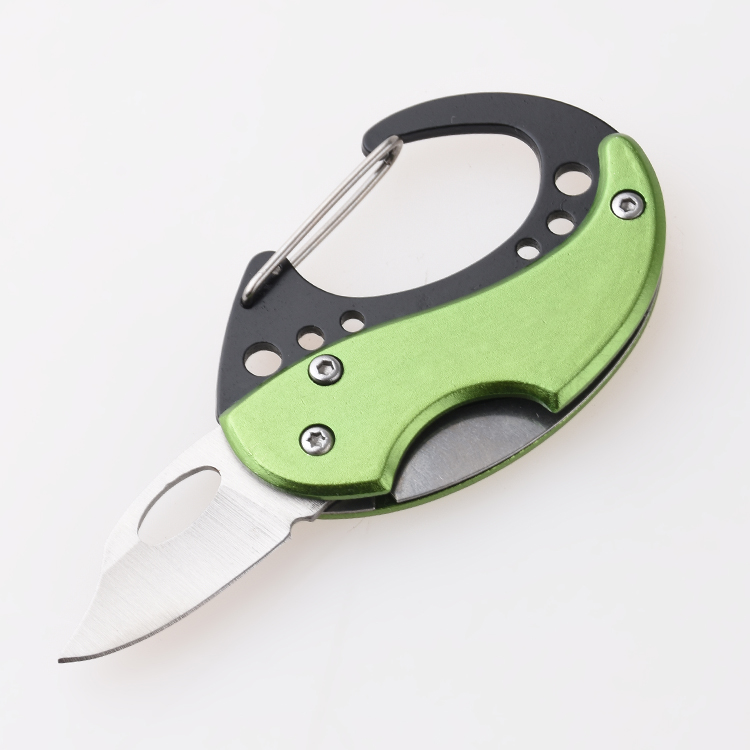
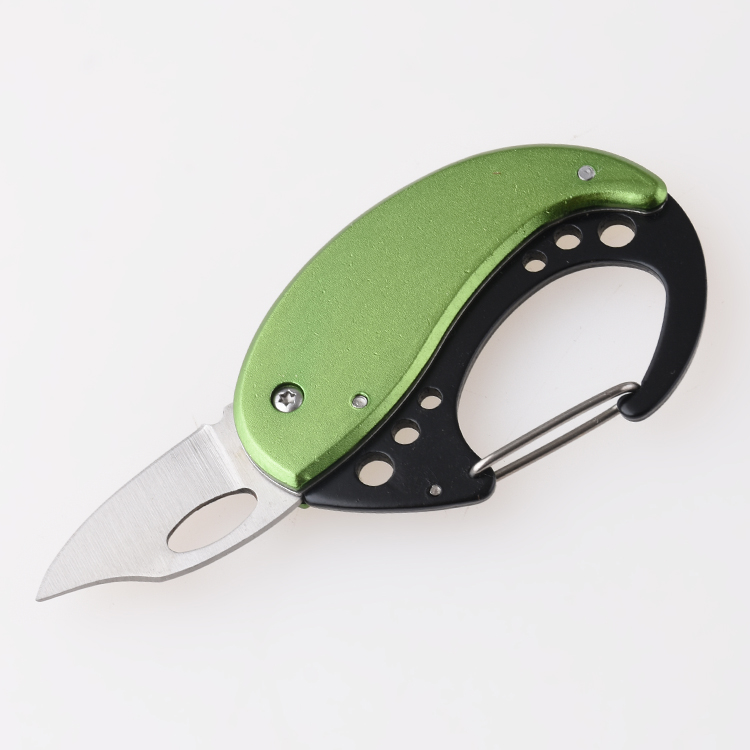
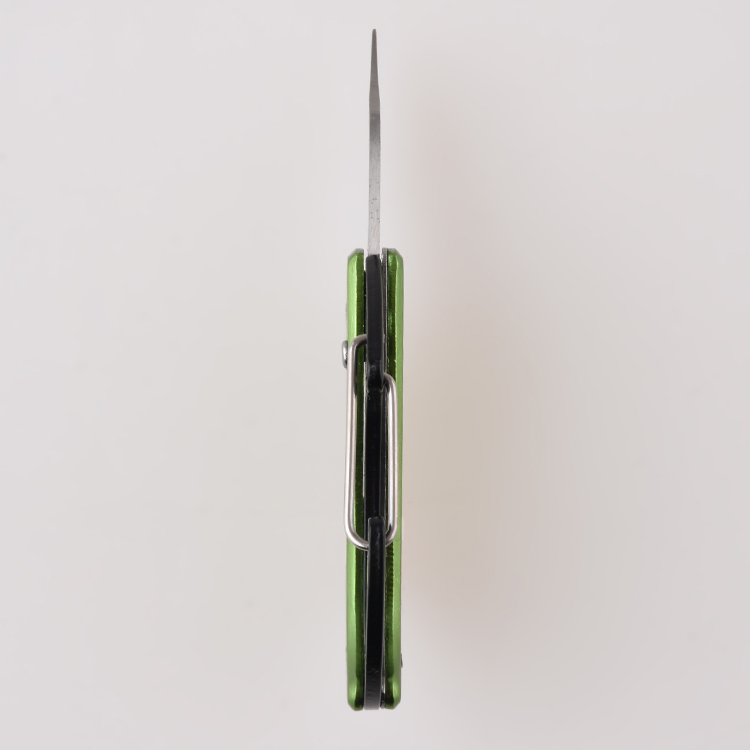
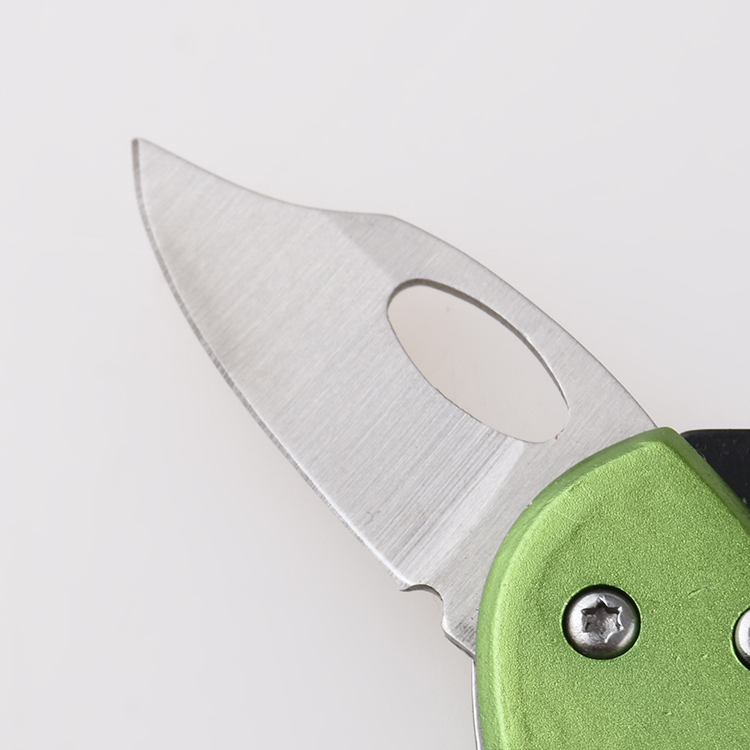
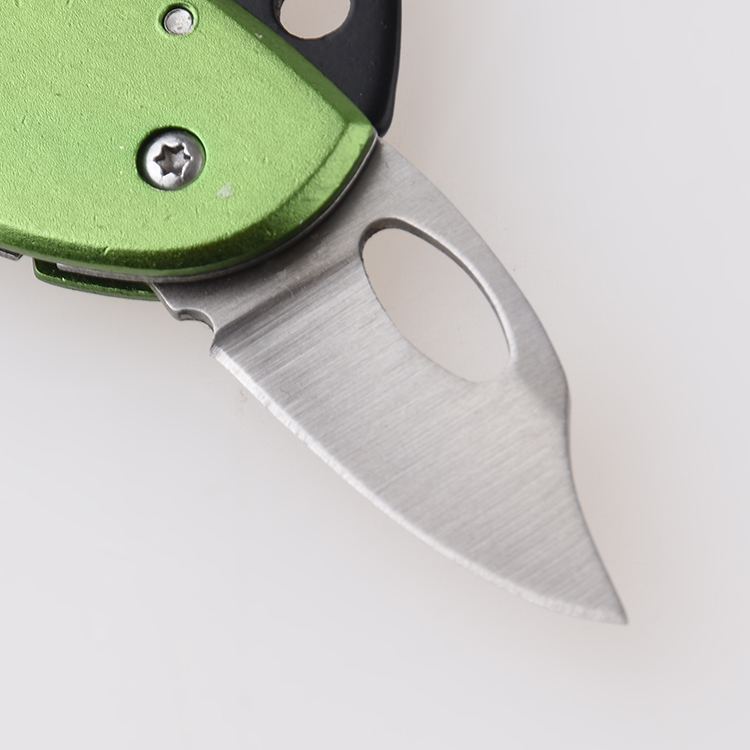
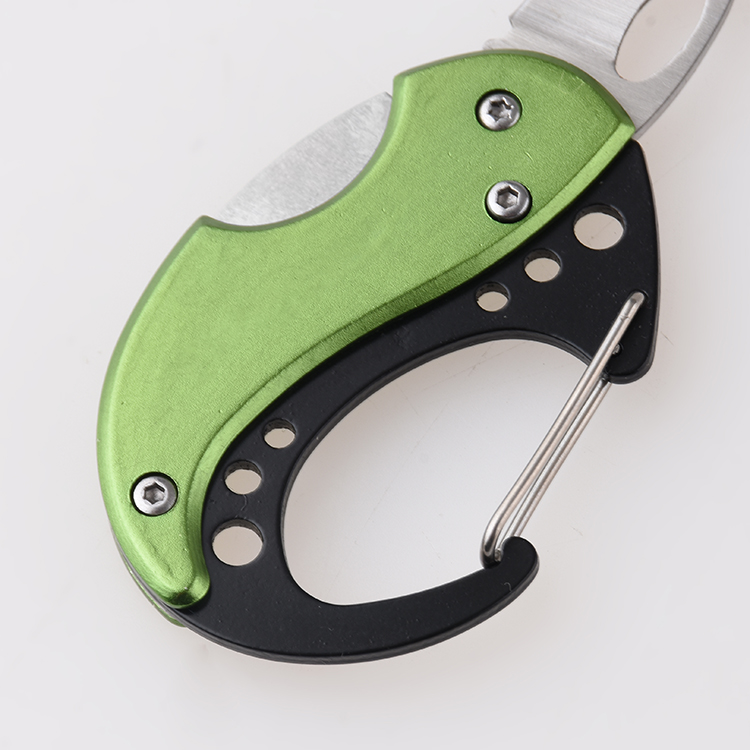
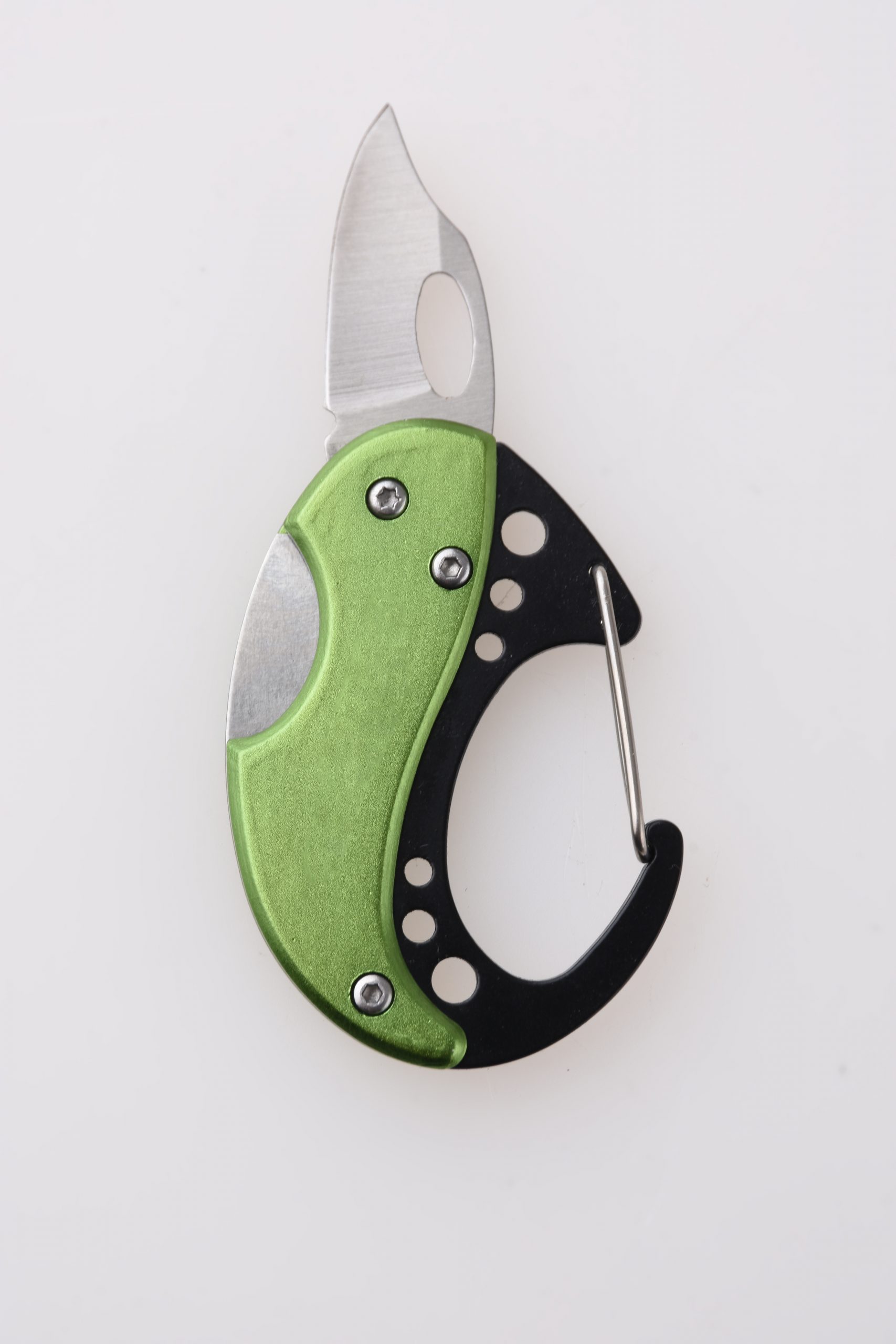
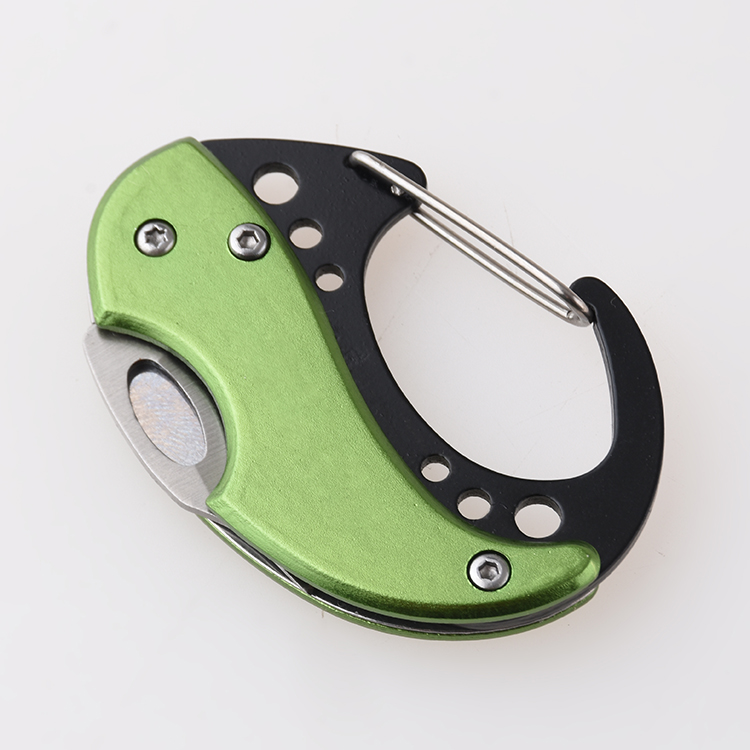
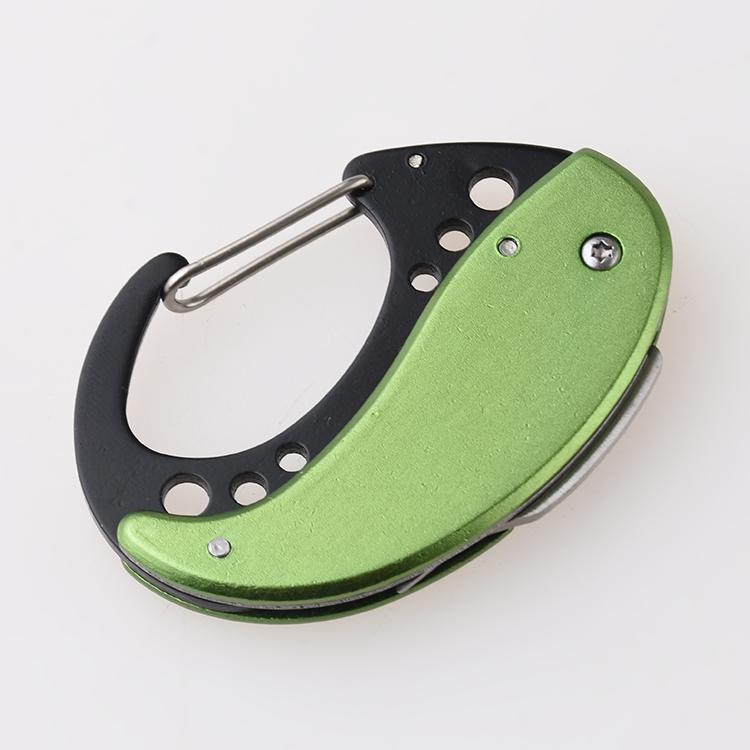
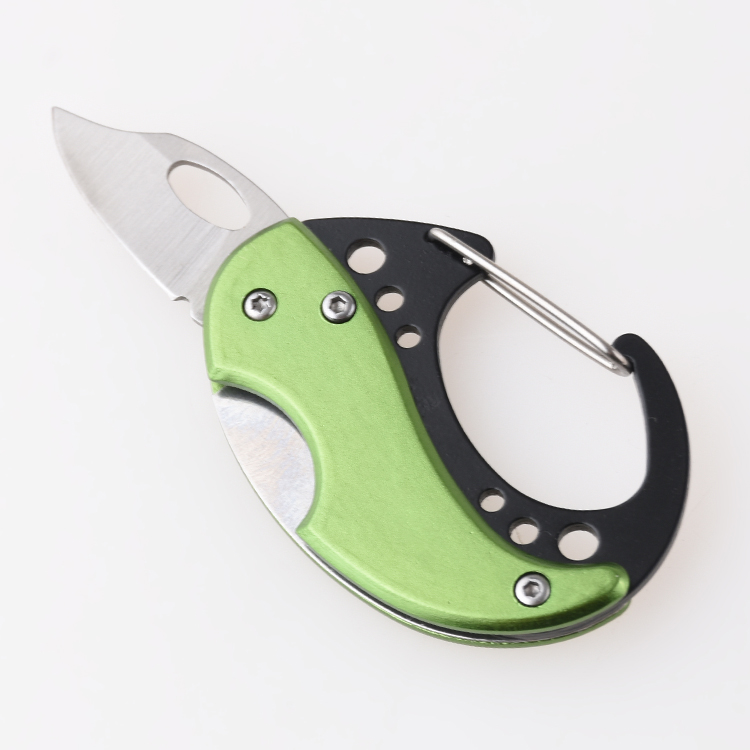
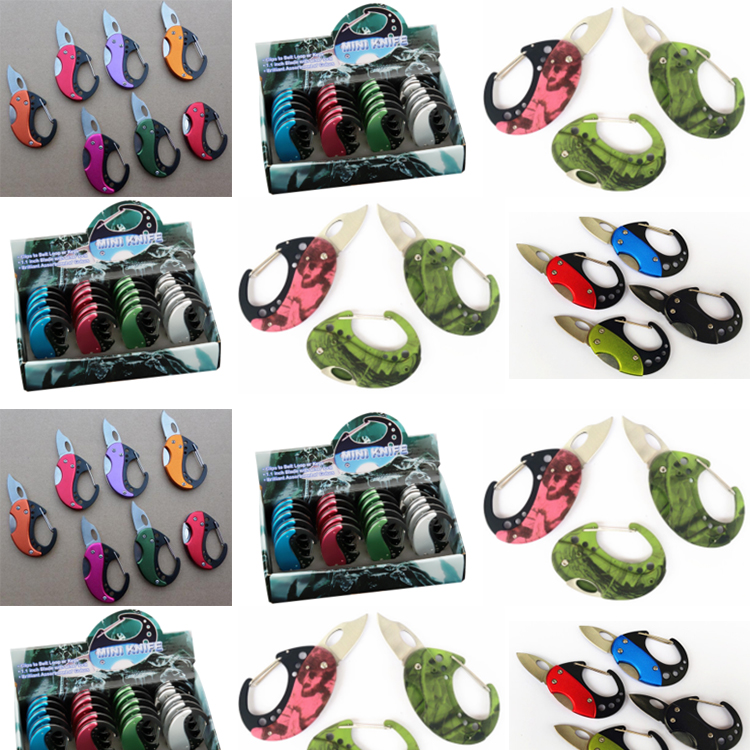
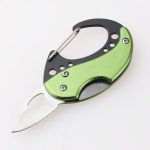

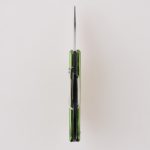

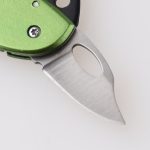
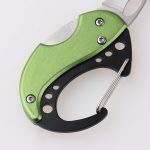
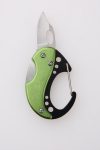
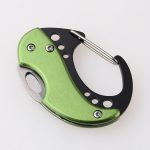
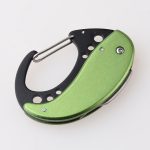
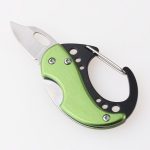
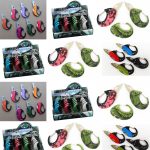
aytem Blg.: JLD-KC20B
Segment ng item: Carabiner
Pangunahing materyal ng katawan: 2CR13
Panghawakan ang materyal: Aluminyo
Sarado ang haba: 2.24” / 57mm
Binuksan ang haba: 3.35” / 85mm
Kabuuang kapal: 0.28” / 7mm
Kabuuang taas: 1.516” / 38.5mm
Haba ng talim: 1.14” / 29mm
Timbang: 0.88 oz / 25g
Estilo ng talim: /
Kulay ng hawakan: Berde
Pangunahing pagtatapos ng katawan: Satin
Pangasiwaan ang tapusin: Anodized aluminyo
Pag-lock ng talim: Liner lock
kaluban: /
Mga pag-andar: 2 sa 1
-Talim
-Susing butas
ODM Regular na MOQ: 209
Puna: 24 pieces in 1 box set, totally 5,016 pieces. Handle color is optional.
In the dynamic world of outdoor adventure and daily hustle, a tool that brings both functionality and flair is a treasure to behold. That is exactly what Shieldon presents with the JLD-KC20B Carabiner Lock Blade Mini Knife. This multi-color gift set is not just an ordinary accessory; it’s a statement of style and a testament to practicality. Allow this product description to take you through the vibrant journey of the JLD-KC20B, a pocket-sized powerhouse poised to become an indispensable part of your everyday carry.
Introducing the JLD-KC20B: A Fusion of Form and Function
The JLD-KC20B is a compact, versatile tool designed for the active individual who values efficiency and aesthetic. It seamlessly combines the utility of a knife with the convenience of a carabiner, integrating seamlessly into the user’s lifestyle, whether it’s for quick fixes or as a reliable companion on outdoor escapades.
Robust Build, Refined Design
Crafted with a main body material of 2CR13 stainless steel, the JLD-KC20B stands as a durable option against wear and tear. This robust construction is complemented by a handle of premium anodized aluminum, which not only adds to the tool’s strength but also offers a sleek, modern look with its vibrant green hue.
Compact Dimensions for the Active Life
Designed with mobility in mind, the JLD-KC20B sports a closed length of 2.24 inches (57mm) and an opened length of 3.35 inches (85mm), making it an easy fit for any pocket, pouch, or pack. Its total thickness is a mere 0.28 inches (7mm), with a height of 1.516 inches (38.5mm), ensuring that it remains discreet and manageable throughout its use.
The Blade: Sharp, Precise, Ready
The knife boasts a 1.14-inch (29mm) blade that promises precision in every cut. Despite its modest size, the JLD-KC20B does not compromise on performance, providing a reliable sharp edge for a wide range of cutting tasks.
Lightweight for Effortless Carry
Weighing in at just 0.88 oz (25g), the JLD-KC20B is the epitome of a lightweight tool. This mini knife can be transported effortlessly, offering the perfect blend of minimalism and utility.
Aesthetic Appeal: Satin and Anodized Elegance
The main body finish features a satin sheen that exudes understated class, while the anodized aluminum handle is available in a vibrant green, adding a splash of personality to the tool’s appearance. This elegant combination ensures the JLD-KC20B stands out for all the right reasons.
Secure Usage with Liner Lock
Safety is paramount with any blade, and the JLD-KC20B addresses this with a dependable liner lock. This locking mechanism ensures the blade remains fixed during use, preventing accidental closure and potential injuries.
Dual Utility: More Than Just a Knife
Built into the design of the JLD-KC20B are two primary functions:
ODM Regular MOQ: Ready for Retail and Gifts
The standard minimum order quantity for the JLD-KC20B is set at 209 units, with each box set containing 24 pieces. This totals an impressive 5,016 pieces, primed for retailers seeking to stock up on a unique and practical offering.
Remark: Customizable to Match Your Style
One of the most appealing aspects of the JLD-KC20B is the optional handle color. While the default is a lively green, buyers have the liberty to choose a color that matches their brand or personal preference, allowing for a tailored and memorable gift set or retail product.
Purchasing Description
When purchasing the JLD-KC20B Carabiner Lock Blade Mini Knife, you are investing in a product that combines daily convenience with a dash of color. This mini knife set is ideal for anyone from the casual camper to the busy urbanite. Its compact size, safety features, and dual-purpose design make it a standout addition to any product catalog.
The anodized aluminum handle not only provides durability but also allows for a personal touch with its color customization. Retailers can match the set to their store’s theme or cater to seasonal color trends. Moreover, the versatile nature of the JLD-KC20B makes it a thoughtful gift for corporate events, promotional giveaways, or personal presents for friends and family who appreciate practicality wrapped in elegance.
The JLD-KC20B Carabiner Lock Blade Mini Knife set is not just another item on the shelf; it’s a multi-functional tool that promises to be a constant companion for your customers. A product that’s easy to carry, simple to use, and safe to operate, it’s designed for the demands of contemporary life, where utility and style go hand in hand. With the JLD-KC20B, you’re not just buying a knife; you’re unlocking a spectrum of possibilities in a compact, colorful package.
Carabiners, the ubiquitous metal loops with a spring-loaded gate, are vital to the vertical endeavors of climbers worldwide. However, the carabiner’s journey from its conception to its place on the climber’s harness is a tale of innovation and adaptation. In this exploration, we will delve into the history and origin of carabiners, understanding how they have become a symbol of safety and utility in the climbing community and beyond.
The Roots of the Carabiner
The story of the carabiner begins in the early 20th century, derived from a German term “Karabinerhaken,” which translates to “carbine hook.” Initially, these hooks were used by soldiers to connect items to their belts or to quickly detach their rifles (carbines). The convenience offered by these hooks soon caught the attention of mountaineers, who recognized their potential for quickly and reversibly connecting components in climbing systems.
The Climbing Revolution
Otto Herzog, a renowned German climber of the 1910s, is often credited with pioneering the use of the carabiner in climbing. Herzog utilized a steel snap hook which, despite being heavy and rudimentary by today’s standards, revolutionized climbing techniques of the time. This innovation allowed climbers to move beyond the traditional method of tying ropes directly to pitons (metal spikes driven into rock), which was time-consuming and cumbersome.
The Evolution of Design
The original carabiners adapted for climbing were large and heavy, designed more for strength than convenience. As climbing grew in popularity, the demand for more practical gear led to the evolution of the carabiner. Throughout the mid-20th century, climbers and gear manufacturers experimented with various shapes, sizes, and materials to refine the carabiner’s design.
Manufacturers began using lighter metals such as aluminum, and the carabiner’s shape evolved to increase strength and functionality. The introduction of the ‘D’ shape, which directs the load to the spine (the strongest part of the carabiner), was a significant advancement. This was followed by the development of different locking mechanisms like the screwgate and the auto-locking gate, which provided additional security.
The Carabiner Today
Today’s carabiners are a far cry from their predecessors. Modern manufacturing techniques have produced carabiners that are strong enough to handle the worst falls but light enough that climbers can carry dozens without being weighed down. They come in various styles, including HMS for belaying, oval for pulley systems, and asymmetric D-shaped for general climbing use.
Materials science has also advanced, with the integration of aerospace-grade aluminum and heat treatments that enhance the carabiner’s strength and durability. Special coatings and finishes have been developed to increase corrosion resistance and reduce wear.
Safety and Standardization
As the uses of carabiners expanded, the need for safety standards became paramount. International organizations like the Union Internationale des Associations d’Alpinisme (UIAA) and the European Committee for Standardization (CEN) now provide rigorous standards for carabiner manufacturing and testing. These guidelines ensure that every carabiner made for climbing meets specific strength and performance criteria.
The Carabiner Beyond Climbing
While the carabiner’s roots are firmly planted in the climbing world, its utility has transcended into everyday life. Carabiners are now used in rescue operations, sailing, hot air ballooning, industrial work, and even as keychains. Their simplicity and reliability have made them a tool of choice for securing, fastening, and hoisting in countless applications.
Conclusion: A Legacy of Connection
From the battlefields to the highest peaks and into our everyday lives, the carabiner has proven to be a marvel of design and utility. Its history is a testament to human ingenuity, constantly pushing the limits of what is possible. Climbers and non-climbers alike can appreciate the carabiner, not only for its practical applications but also for its storied past—a true linking of histories that continues to evolve and inspire.
Handa kaming tumulong sa anumang yugto ng iyong OEM knife project. Ipadala sa amin ang iyong katanungan at ang iyong badyet at babalikan ka namin sa loob 24 na oras.